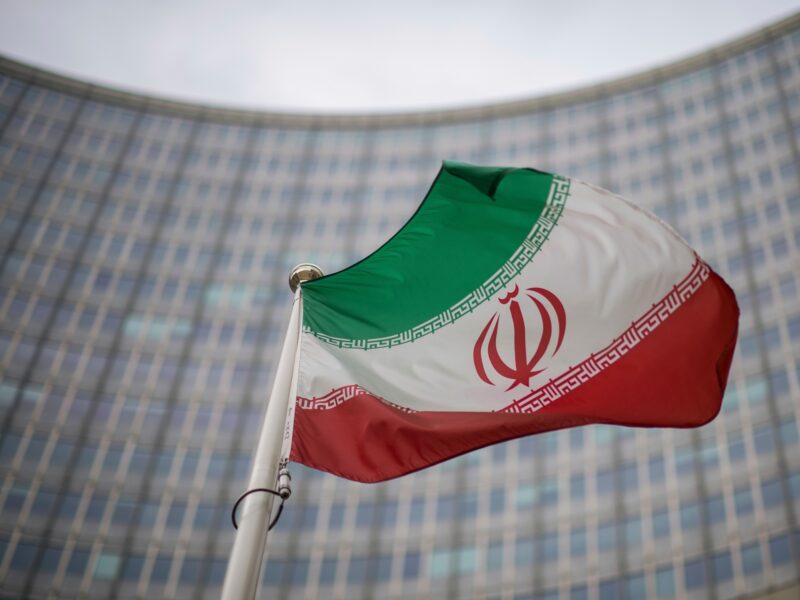[ad_1]
Tehran, Iran – Iran and the European Union appear to be on a collision course over the bloc’s preparation to impose sanctions aimed at punishing Tehran for its response to continuing protests.
European officials are reportedly ready to finalise human rights sanctions on Iranian officials and entities during an upcoming meeting of foreign ministers in Luxembourg on Monday.
Iran has clearly signalled that it will not sit idly by if the bloc joins the United States, Britain and Canada in imposing sanctions, with foreign minister Hossein Amirabdollahian warning several European foreign ministers of “reciprocal action” in phone calls this week.
“Some countries have considered riots and terrorist actions as protests in interventionist comments, which in effect incite rioters and terrorists,” the Iranian diplomat told his Portuguese counterpart, João Gomes Cravinho, in his latest phone call late on Friday.
US outlet Politico reported earlier this week that Tehran has also privately warned the bloc, sending letters to EU ambassadors and foreign policy chief Josep Borrell to warn of the “detrimental impact on Iran-Europe relations” any sanctions would have.
But European officials appear unfazed as the French foreign minister, Catherine Colonna, who also spoke with Amirabdollahian earlier this week, told French politicians the sanctions will move ahead “despite the pressure exerted by Iran to cast our positions as interference”.
This comes as the EU has been mediating between Tehran and Washington in their efforts since April 2021 to restore the 2015 nuclear deal that the latter unilaterally abandoned in 2018. The talks have been in limbo with a lack of progress, approaching US mid-term elections and now protests in Iran making a breakthrough increasingly unlikely, at least in the short term.
Protests gradually erupted across Iran after the September 16 death of Mahsa Amini, a 22-year-old woman who was arrested by Iran’s morality police for wearing an improper hijab and died following a three-day coma after she suffered a heart attack in a police “re-education” centre in Tehran.
The medical examiner’s final report, which has also been backed by the parliament, said she did not suffer any blows to the head or vital organs, and attributed Amini’s death to conditions arising after a brain tumour surgery at age eight. Her family have said they suspect maltreatment in police custody.
Western officials and a number of human rights groups have condemned conditions surrounding Amini’s death and the subsequent security forces’ response to the protests.
French President Emmanuel Macron on Wednesday expressed “admiration” for women and youths demonstrating and condemned what he called “repression” by the authorities in comments that drew condemnation from the Iranian foreign ministry.
US President Joe Biden on Friday said he was “stunned” by the aftermath of Amini’s death, saying, “It’s awakened something that I don’t think will be quieted in a long, long time.”
But speaking on Friday with the local and foreign guests of the Islamic Unity Conference in Tehran, Iran’s Amirabdollahian asked, “Who believes that the death of one girl is so important to the Westerners?”
Children in the spotlight
In addition to attributing the protests to foreign powers like the US and Israel, Iranian officials have also blamed “terrorist” separatist groups and anti-establishment media channels and people abroad.
The latest incident involving different narratives by media inside and outside of the country deals with school students, who have featured prominently in the protests and have been seen in videos taking off their hijabs and chanting slogans.
Foreign-based Persian media reported that a high school girl died during a protest in her school in northwestern Ardebil, and several students were arrested. Provincial officials told local media on Friday the “fake and false” news is propagated by anti-establishment media “who have targeted the general and psychological security of the society”.
There have also been reports of students being arrested in other provinces, which authorities have denied.
Amnesty International earlier this week published the names and pictures of 23 children that it said have been killed by security forces in Iran, a claim the authorities have yet to specifically address.
But officials have refuted that security forces have played any role in the deaths of two of the children named by Amnesty – 16 year olds Nika Shakarami and Sarina Esmailzadeh, details of whose deaths in Tehran and Karaj respectively were widely circulated and discussed on social media.
Meanwhile, videos of protests continue to circulate on social media despite internet restrictions – mostly targeting mobile connectivity – that have lingered across the country.
On Saturday morning, amid calls on social media for nationwide protests 30 days after Amini’s death, internet censorship observatory NetBlocks reported a new “major disruption to internet traffic data” across Iran.
Indictments have already been issued for dozens of individuals accused of being “leaders of riots” in Tehran and other provinces, with judiciary chief Gholam-Hossein Mohseni-Ejei instructing judges to fast-track cases.

